This article was reviewed by Steve Snedeker, professional landscaper.
Many homeowners believe their hedges are the first or only line of defense for their landscaping. This isn't always the case, though. When you pair your hedges with low-light groundcover, maintaining your yard becomes simpler. So, we researched ideal plants for under your hedges.
The best groundcover to plant beneath your hedges includes:
- Bunchberry
- Bishop's hat
- Sweet woodruff
- False goat's beard
- Goldenstar
- Wild ginger
- Mondo grass
- Creeping Thyme
- Blue Fescue Grasses
- Creeping Junipers
- Pink Sedum
- Periwinkle
- Dragon’s Blood
- Golden Creeping Jenny
- Mazus
These groundcover plants flourish in low light and can help control weeds that might run rampant. The flowers on some of your groundcover options can also accent your hedge's beauty. Read on to learn how to benefit from groundcover's many perks.
![A properly maintained garden hedge, What To Plant Under Hedges [7 Ideas Including Flowers!]](https://gardentabs.com/wp-content/uploads/2022/07/What-To-Plant-Under-Hedges-7-Ideas-Including-Flowers.png)
What To Plant Under Hedges
Sometimes, it's difficult to determine what groundcover plants will work best with your hedges. After all, you have to consider more than the zone you're living in.
If you want flowering groundcover, you won't want to commit to decorative grasses or other low-lying plants. Alternatively, if you'd rather not draw the eye away from your hedges, flowering groundcover may be inconvenient.
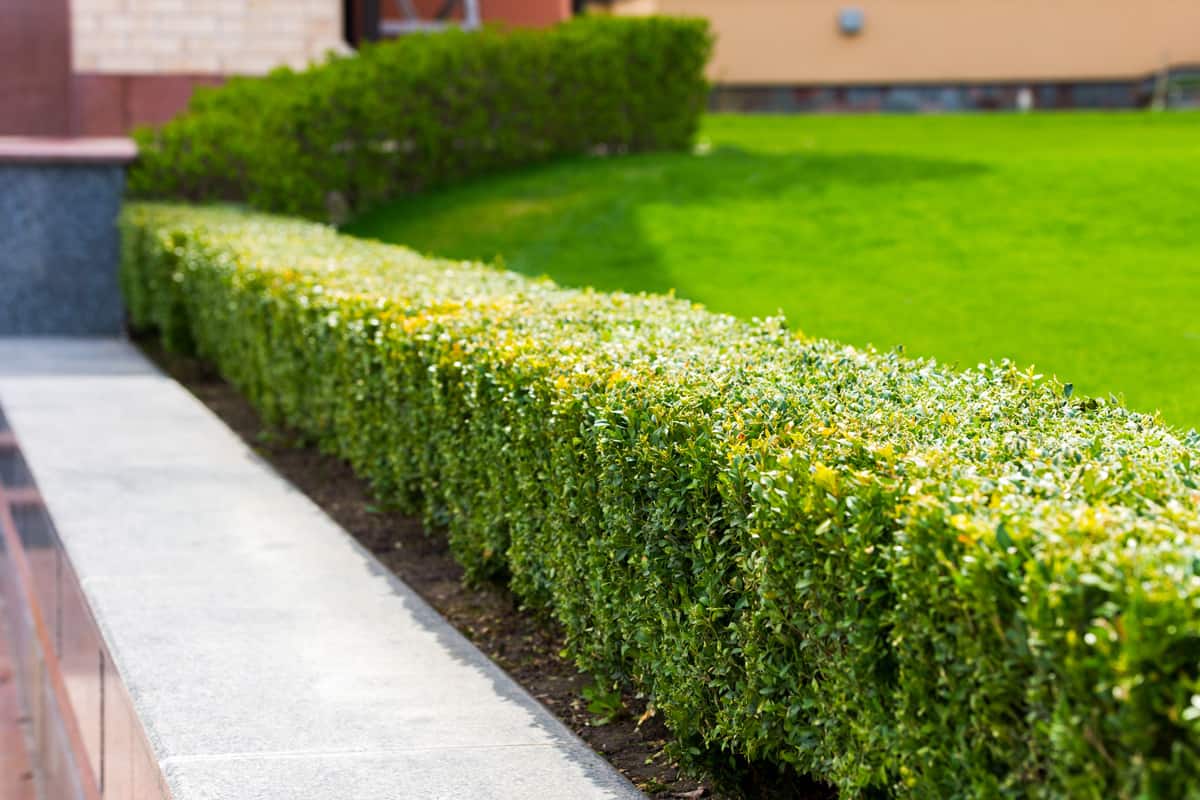
Fortunately, there's more than one kind of groundcover suited for life under a hedge. Once you determine the zone you live in and what look you want to cultivate, you can invest in the groundcover that best suits your needs.
Today, the most popular hedge-friendly groundcover plants include:
1. Bunchberry
Zones 2 through 6
Also known as cornus canadensis, bunchberry thrives in low-light environments. Gardeners refer to this plant as "creeping dogwood." This best describes the way the plant stays low to the ground, providing cover for any bare spots that might otherwise plague your hedges.

Typically bunchberry develops red berries alongside white flowers in the spring. For the rest of the year, xpect deep green leaves to flourish in the shade of your hedges.
While bunchberry might thrive out of sight, you won't have to worry about its well-being. Bunchberry is deer and rabbit resistant, making it the ideal deterrent if you're concerned about critters.
2. Bishop's Hat
Zones 5 through 8
At first glance, it's easy to mistake epimedium, or Bishop's Hat, for a dicentra. Where dicentras grow into full-fledged bushes, however, Bishop's Hat finds itself content beneath your hedges. This plant produces heart-shaped blooms in pinks, reds, yellows, and oranges.
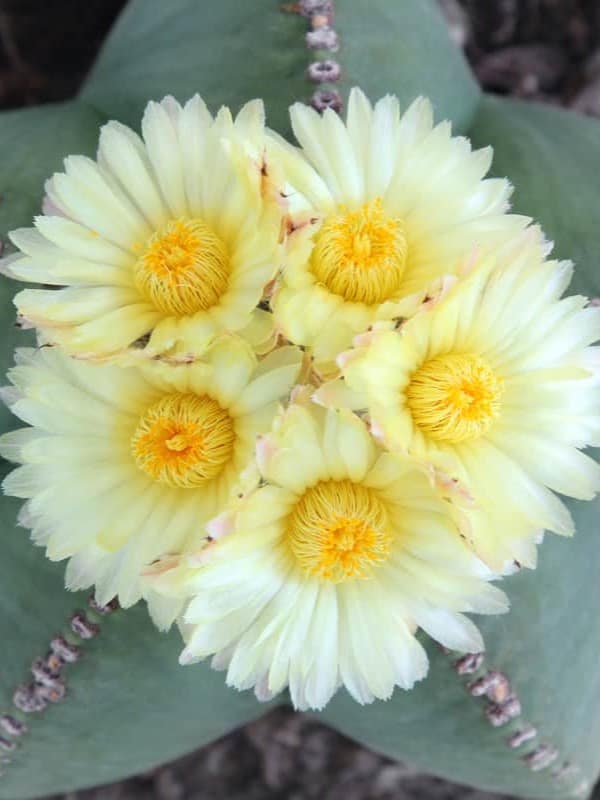
Bishop's hat is not only a low-light plant, but it is also drought tolerant. If you live in a zone that doesn't see a lot of rain, you can count on Bishop's Hat to continue providing you with beautiful blooms throughout the spring and summer.
That said, you'll want to trim Bishop's Hat back come the fall. The green leaves should remain until the weather turns, but you may need to control the Bishop Hats' height for the best cohesion with your hedges.
3. Sweet Woodruff
Zones 4 through 8
Sweet woodruff, or galium odoratum, serves two purposes as ground cover beneath your hedges. This plant produces a sweet smell that doesn't attract deer or rabbits to your undergrowth.
What's more, it prevents unwanted weed growth, minimizing the maintenance you might otherwise have to do on your beds.
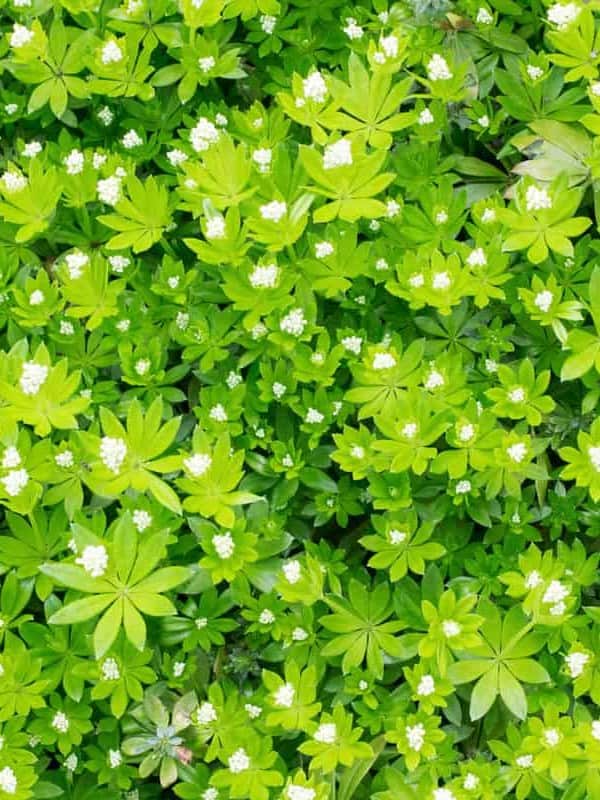
Also, sweet woodruff is a flowering plant. It produces white flowers during the spring and remains green through the fall. You may need to trim back your sweet woodruff throughout the year.
However, the full shade provided by your hedges should ensure it remains a well-kept inclusion in your beds.
4. False Goat's Beard
Zones 5 through 8
Are you looking for a bright blast of color to complement your hedges? False goat's beard, or astilbe biternata, offers you hot pink blooms for the better part of your zone's spring.
While the flowers will die off with the changing of the season, the intermixing of the hot pink blooms and your hedges makes for eye-catching beds.

False goat's beard is one of the taller forms of groundcover available to homeowners today. If you want to avoid too much intermingling, either invest in smaller false goat's beard plants or regularly trim back your undergrowth.
Do note that false's goat's beard is not resistant to deer or disease. As such, you'll need to keep a close eye on your hedges if you want to preserve their overall health.
5. Goldenstar
Zones 5 through 9
Are you looking for a perennial to accent your hedges? Look no further than goldenstar, also known as chrysogonum virginianum. Goldenstar thrives when planted in full shade, displaying bright yellow blooms well into the summer.

That being said, the plant is slow-growing, so you'll have to be patient as it comes into itself.
Fortunately, goldenstar doesn't attract any unwanted pests and is disease resistant. The only visitors you're likely to get to your hedges may be pollinators. This means that your goldenstar is likely to flourish, as are any other flowering plants you host nearby.
6. Wild Ginger
Zones 4 through 8
Wild ginger isn't the same ginger that you can use in your kitchen. Instead, wild ginger smells the same as its kitchen-oriented cousin but confines itself to the shadows beneath your hedges.
Otherwise known as asarum, wild ginger produces green, purple, and white flowers throughout the earliest months of the year.
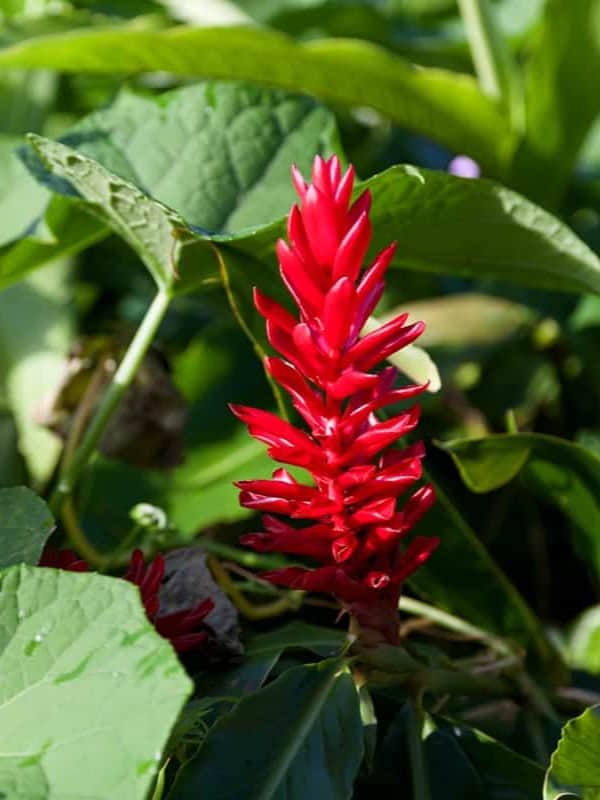
While its flowers may disappear as the weather warms, the protective opportunities that wild ginger offers aren't so seasonal. Wild ginger is deer-resistant, meaning that it's likely to keep unwanted critters away from your hedges.
Likewise, wild ginger's greenery lasts year-round. While you may need to winter this groundcover, you can trust it to keep unwanted growths out of your beds even as the weather changes.
7. Mondo Grass
Zones 6 through 10
If you're looking for a simple addition to your hedge landscaping, why not consider mondo grass? Mondo grass is a low-light groundcover that's also referred to as dwarf lily turf.
The plant doesn't resemble traditional grass so much as it resembles soft onion tops. Come spring, you can enjoy a light sprinkle of flowers ranging from pink to white.
Mondo grass can reach up to one foot in height but is accommodating when trimmed or otherwise maintained. This plant is also deer-resistant, so you won't have to contend with any unwanted critters after your initial planting.

Also, mondo grass is disease resistant. This means that it will stay safe from any conditions that might otherwise negatively impact your landscape's health. Similarly, it can protect your hedges from undue harm.
8. Creeping Thyme
Zones 4 through 9
For a fragrant, and low-maintenance ground cover to plant under their hedges, Creeping Thyme is great choice.
This plant flourishes in a range of environments, thriving in full sun but also tolerating partial shade. It requires well-drained soil that is average to dry.
Once creeping thyme is established, it becomes drought-tolerant, reducing the need for frequent watering. Maintenance is minimal, generally only needing occasional trimming to encourage growth.
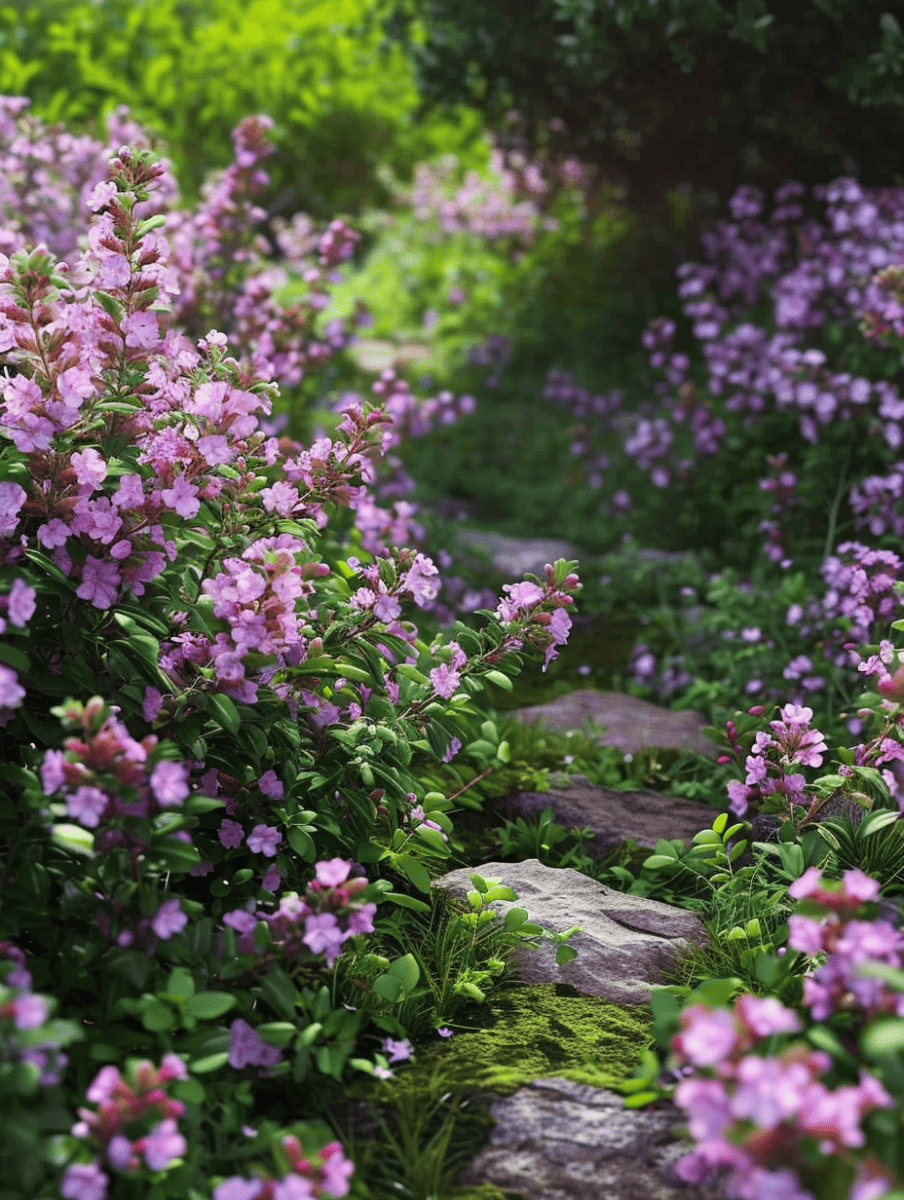
Apart from its practical benefits, creeping thyme is also decorative. It features tiny, aromatic leaves and, during summer, it blooms profusely, attracting bees with its colorful display.
Its growth habit is cushion-like, staying low to the ground, usually not exceeding three inches in height.
9. Blue Fescue Grasses
Zones 4 through 8
When you're considering adding texture and color under your hedges, Blue Fescue (Festuca glauca) is an excellent choice for your garden.
This grass offers year-round visual interest with minimal maintenance, making it a great addition to any landscape. Blue Fescue sports a distinctive blue hue that stands out beautifully against green foliage.

Its fine, wiry blades contribute a unique texture that complements fuller plants or hedges. In terms of growing conditions, Blue Fescue prefers full sun but can tolerate partial shade.
It is adaptable to various soil types, although well-draining soil is ideal. For best results, plant Blue Fescue in clusters or as a border to create a cohesive look.
10. Creeping Junipers
Zones 3 through 9
This low-maintenance evergreen shrub fills spaces beautifully and is perfect for a wide range of environments. Creeping Juniper is exceptionally disease resistant, which means less worry for you.
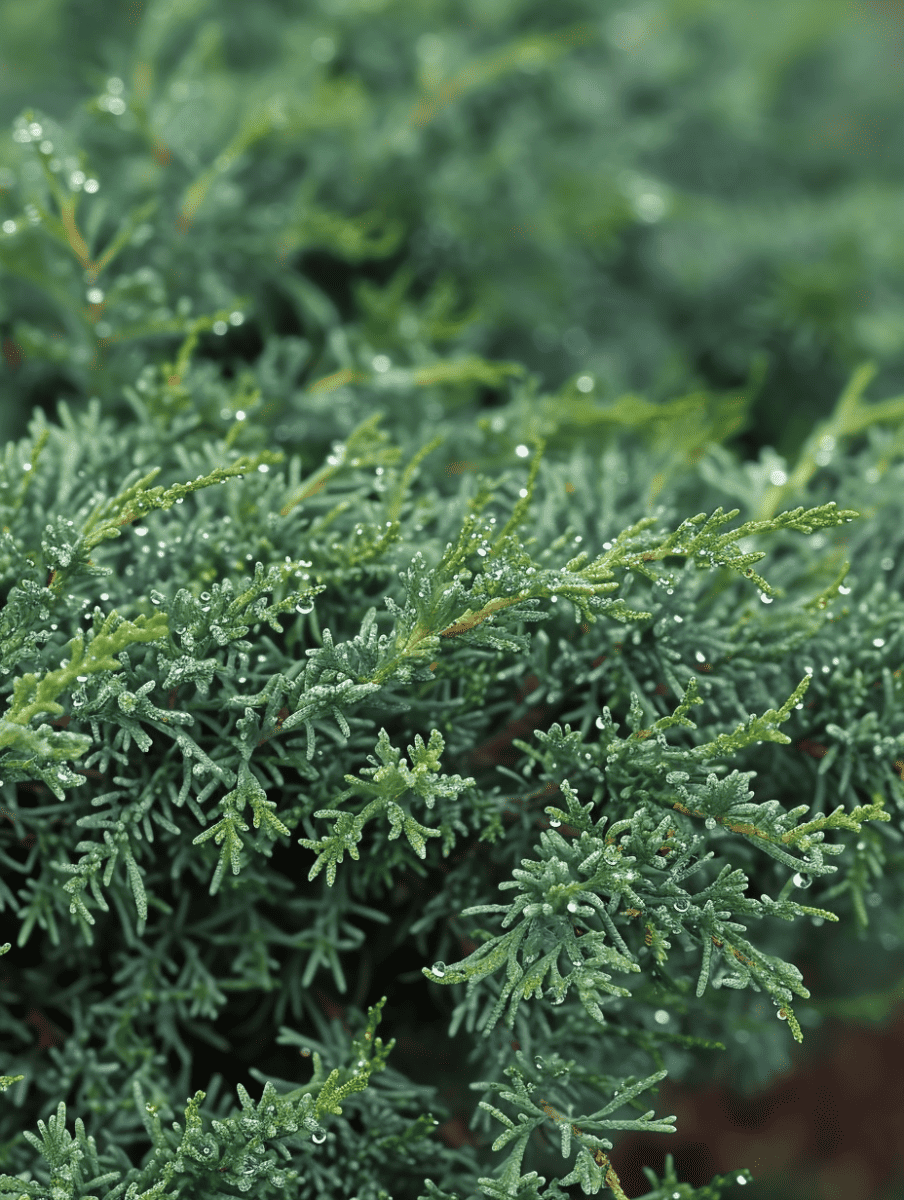
It also adapts well to various soil types, from sandy soils to those with medium moisture. The aesthetic appeal of Creeping Juniper is undeniable; it forms a dense mat of silver-blue needles that provide year-round interest, turning a charming purple in winter.
For optimal growth, plant your Creeping Juniper in a spot that receives full sun—at least six hours a day. When spacing the plants, position them about 6 to 12 feet apart to allow room for growth, as they can spread up to 10 feet wide.
11. Pink Sedum
Zones 3 through 11
Pink sedum is a versatile and robust plant that thrives in a wide range of climates, making it a perfect addition to almost any garden.
You can embellish your hedges with these beneath to create a rich tapestry of textures and colors.
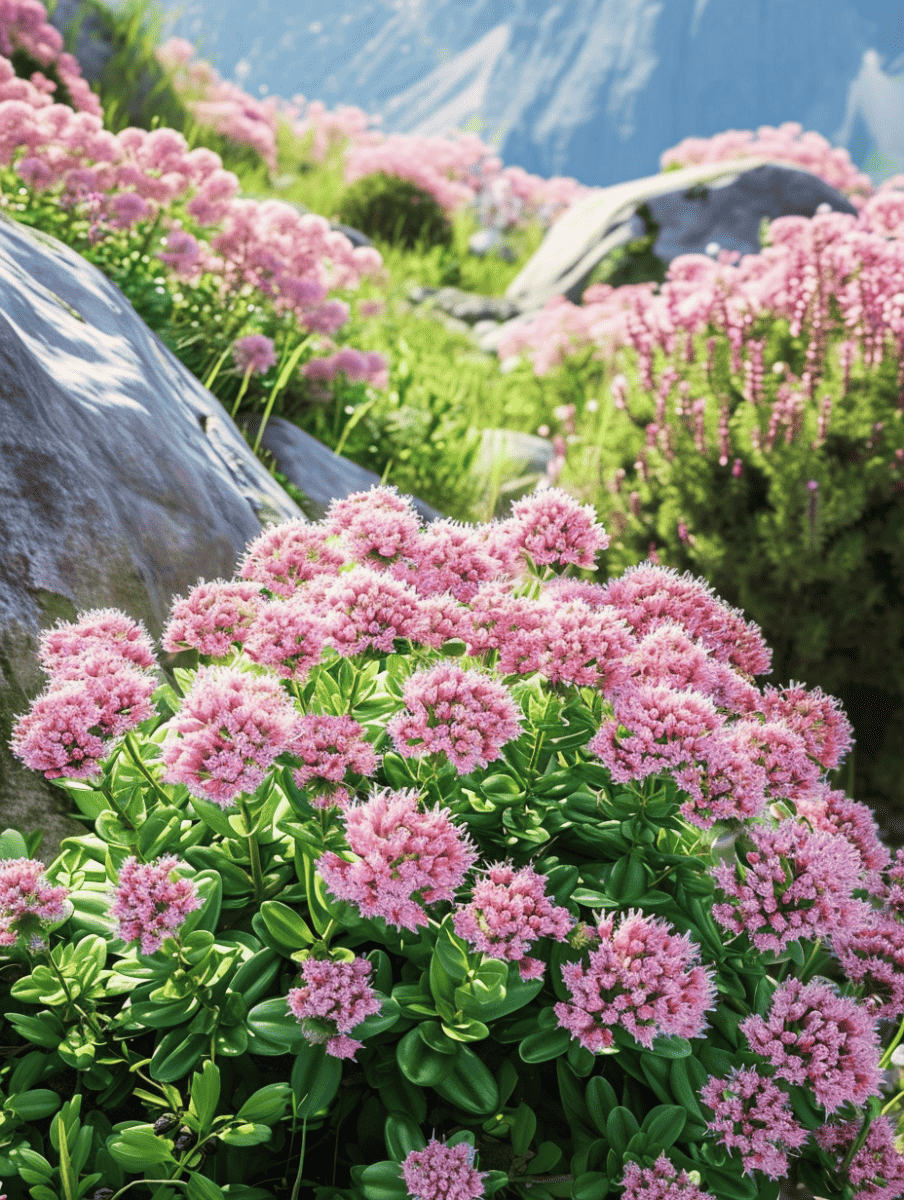
Pink sedum prospers in full sun, so it's essential to ensure your hedges allow for ample sunlight to let these succulents flourish.
When it comes to soil, plant pink sedum in well-drained soil to prevent root rot, as these plants tolerate dry conditions exceptionally well.
12. Periwinkle
Zones 4 through 9
Periwinkle provides lush, green foliage along with delightful blue or lavender flowers that mainly bloom in the spring.
This plant's versatility is evident in its light requirements; it thrives in conditions ranging from partial shade to full sun, making it particularly suitable for the dappled light often found under hedges.
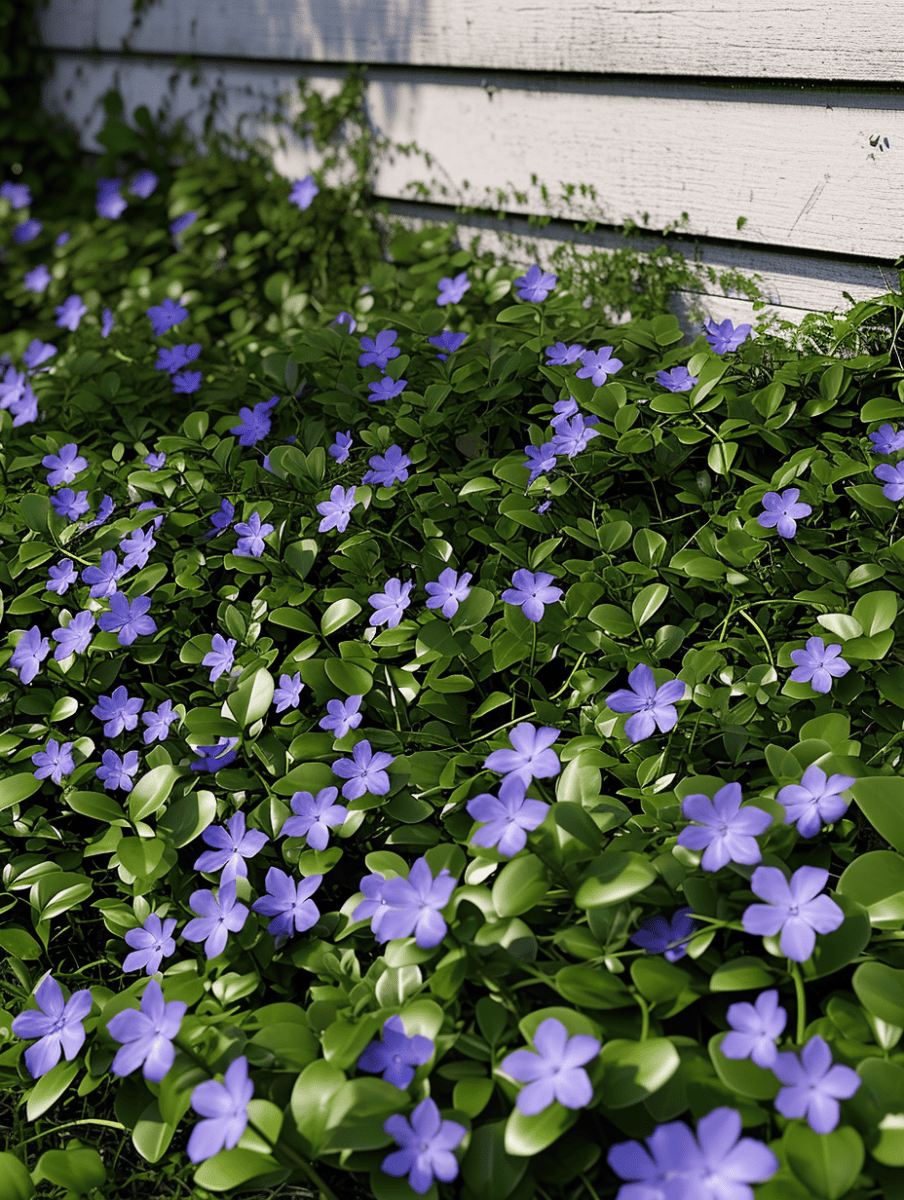
When it comes to soil and watering, it's important to plant Periwinkle in well-drained soil. While it becomes quite drought-tolerant once established, consistent watering during the first growing season is crucial to help establish a strong root system.
In terms of growth habit, as a trailing plant, it creates a dense, mat-like formation. This characteristic helps suppress weeds and cover bare spots with ease, making it an excellent filler between larger plants or shrubs.
13. Dragon’s Blood
Zones 3 through 9
This plant is loved by butterflies, so it brings more life and color to your garden. It's easy to care for, perfect for gardeners who are busy.
This plant spreads quickly under your hedges and stays low, about 3-6 inches tall. It has green leaves with red edges that turn bright red in the fall.

In the summer, it grows small, star-shaped flowers that add more color.The color of the leaves can change depending on how much sun it gets.
It's important to plant it in soil that drains well and not to water it too much. When planting, give each plant about 12 inches of space to spread out.
14. Golden Creeping Jenny
Zones 3 through 9
The Golden Creeping Jenny is a versatile and vibrant ground cover that can bring light to the shaded areas beneath your hedges. It grows 2-4 inches tall and can spread widely, creating a dense mat.
This plant also produces cup-shaped, bright yellow flowers, adding to its beauty. The Golden Creeping Jenny thrives best in full sun to part shade.

It prefers moist, humus-rich, and well-drained soils and is tolerant of damp soils. Interestingly, it can also be grown in containers with 1-6 inches of water.
While it's a vigorous grower, the golden variety is less aggressive than its green counterpart, making it easier to manage. It's generally pest and disease-free and is easy to propagate by stem cuttings in the spring.
15. Mazus
Zones 5 through 8
This hardy perennial is a gardener's dream for filling those shady spots with a dash of color and texture.
Not only is Mazus reptans an eye-catching addition, but it’s incredibly easy to grow. Thriving in full sun to partial shade, it's versatile and will flourish even under the dappled light of your hedges.
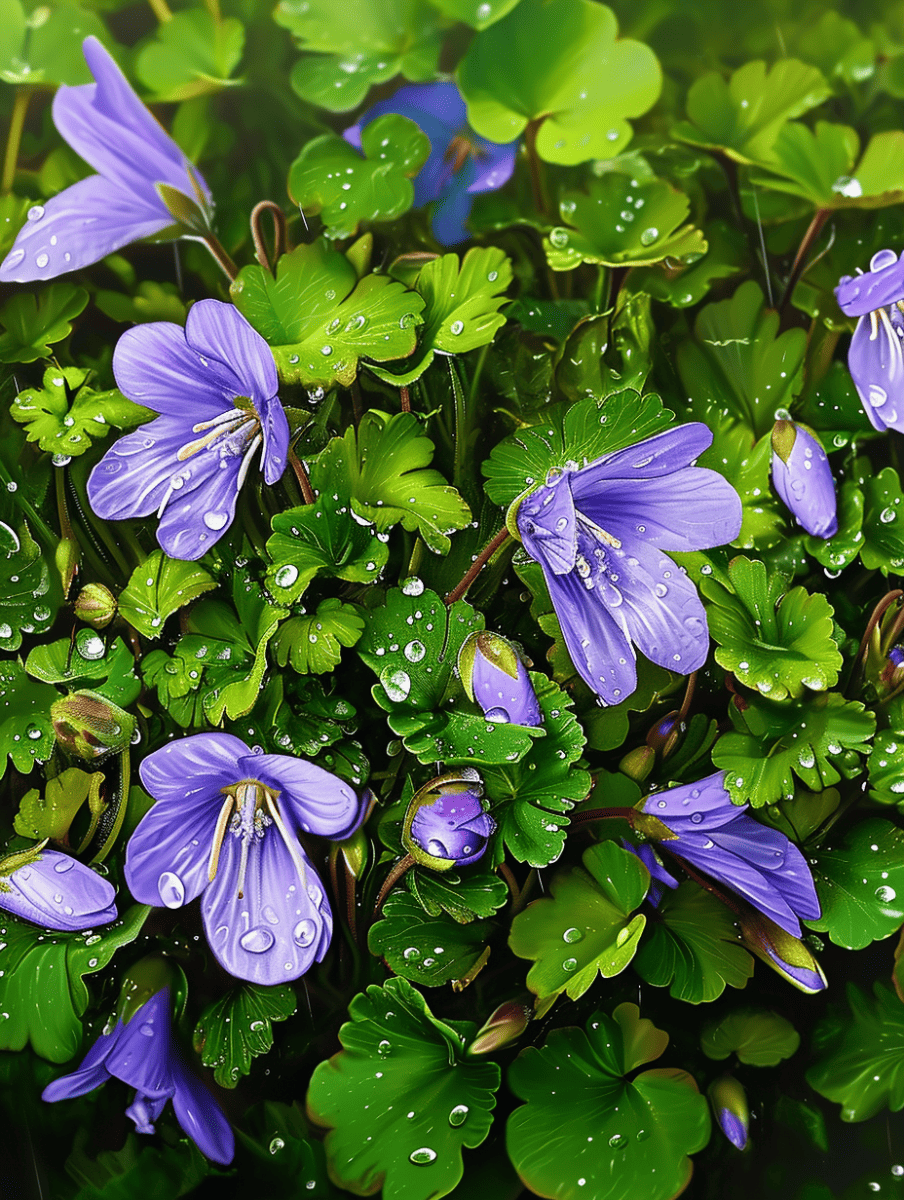
You'll adore its low-maintenance nature, as it forms a dense mat that's low to the ground, standing at just 2 inches tall.
The plant's soil preferences are equally forgiving; it grows best in moist, well-drained soils but won't fuss over the type—loamy works great, but it will adapt. Just ensure that the soil isn't completely dry.
In the summer, get ready for a sprinkle of tiny blue flowers that will add a fairy-tale touch to your landscape.
For those who live in zones with mild winters, you'll be pleased to know that this groundcover keeps its leaves, adding year-round interest to your garden.
The Benefits of Cultivating Under-Hedge Plants
When you first establish your hedges, you might not think that the underside of your beds merits much attention. However, this is not the case.
Your hedges are only as healthy as their beds. You need to give your beds as much TLC as possible if you want your hedges to thrive.
Under-hedge plants can make caring for your beds all the simpler. The benefits of cultivating under-hedge plants can include:
A Natural Weed Barrier
While not all weeds have it out for your hedges, more than a few invasive species will happily choke out your landscaping staples. This is where under-hedge growths come into play.
All the aforementioned plants and flowers create a natural barrier between your hedges and wily weeds.
Not only do these barriers prevent unwanted weed growth, but they eliminate the need for you to use potentially-dangerous weedkillers. Certain weedkillers can harm more than just plants, after all.
If you're not careful, some weedkillers can get into your water supply and compromise your family's health.
Under-hedge flowers and groundcover allow you to avoid using weedkillers without sacrificing your landscaping to unchecked weed growth. This dual service makes exploring the groundcover best suited to your zone worth it.
Adding Color to Your Landscape
When you cultivate your landscaping, you increase your property's curb appeal and draw pollinators to your land. The economic value of a beautiful curb is one thing. However, the promise of annual growth courtesy of your local pollinators is another entirely.
The pop of color you subsequently add to your land, courtesy of your under-hedge growth, brings positive attention to your lawn. And the more you're able to encourage that attention with brightly colored undergrowth, the more opportunities your property has to reap the benefits.
In Closing

Groundcover plants and flowers accentuate your hedges - but that's not all. When you pick the right groundcover to foster beneath your hedges, it's easier for you to maintain your landscaping.
Combine beautiful, flowering groundcover plants with your burgeoning row of hedges to beautify your lawn and make the maintenance of your property a little simpler.
